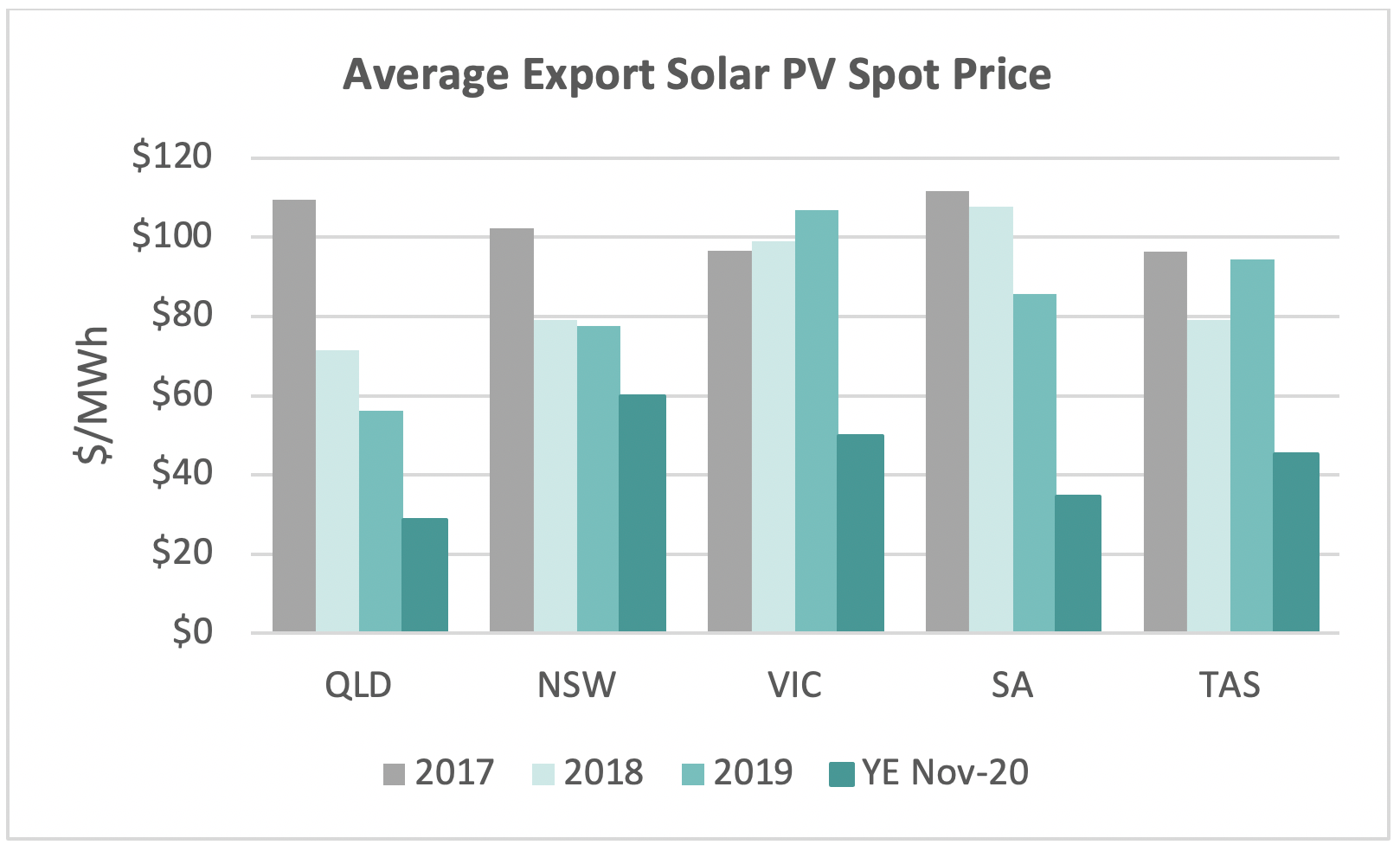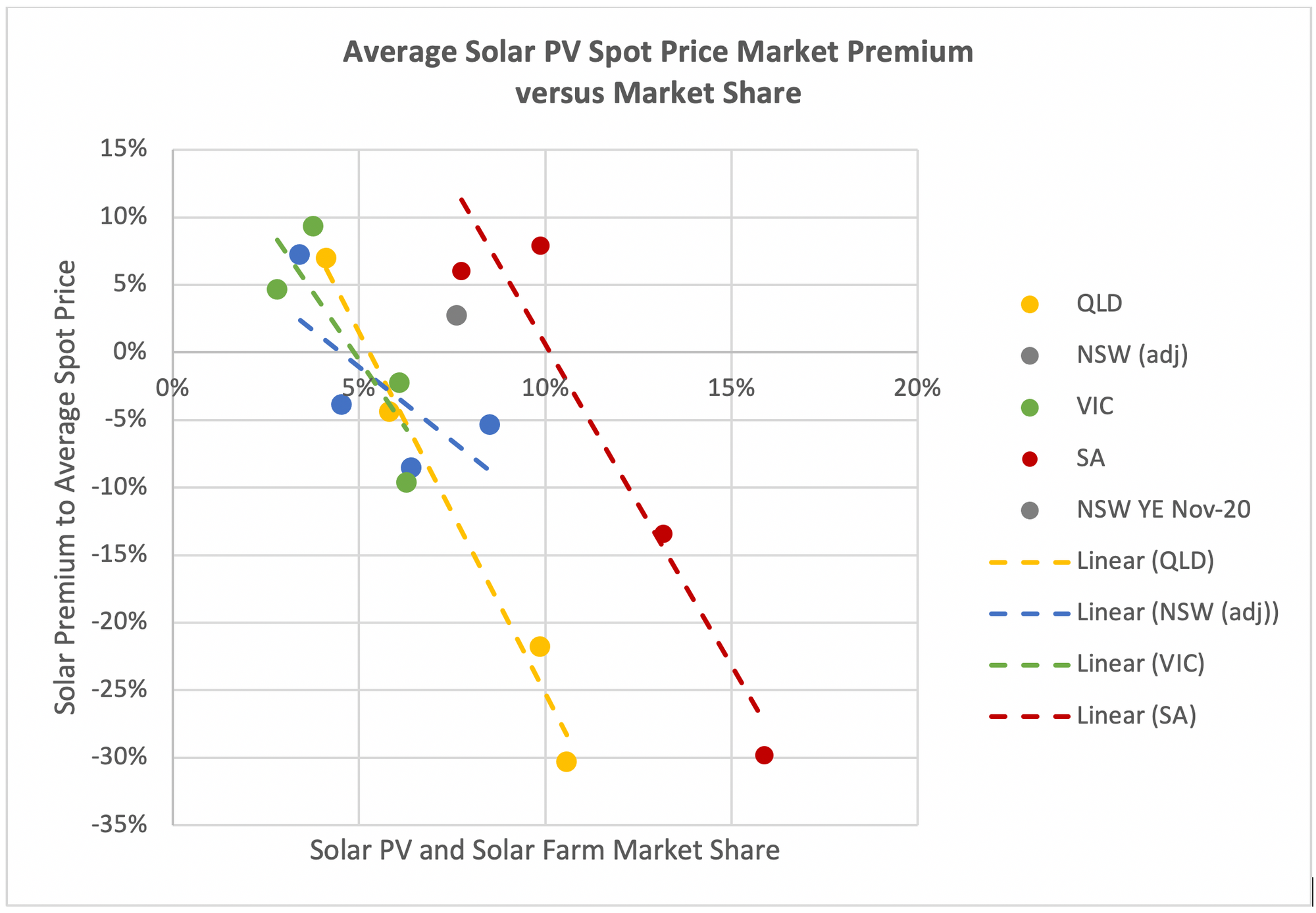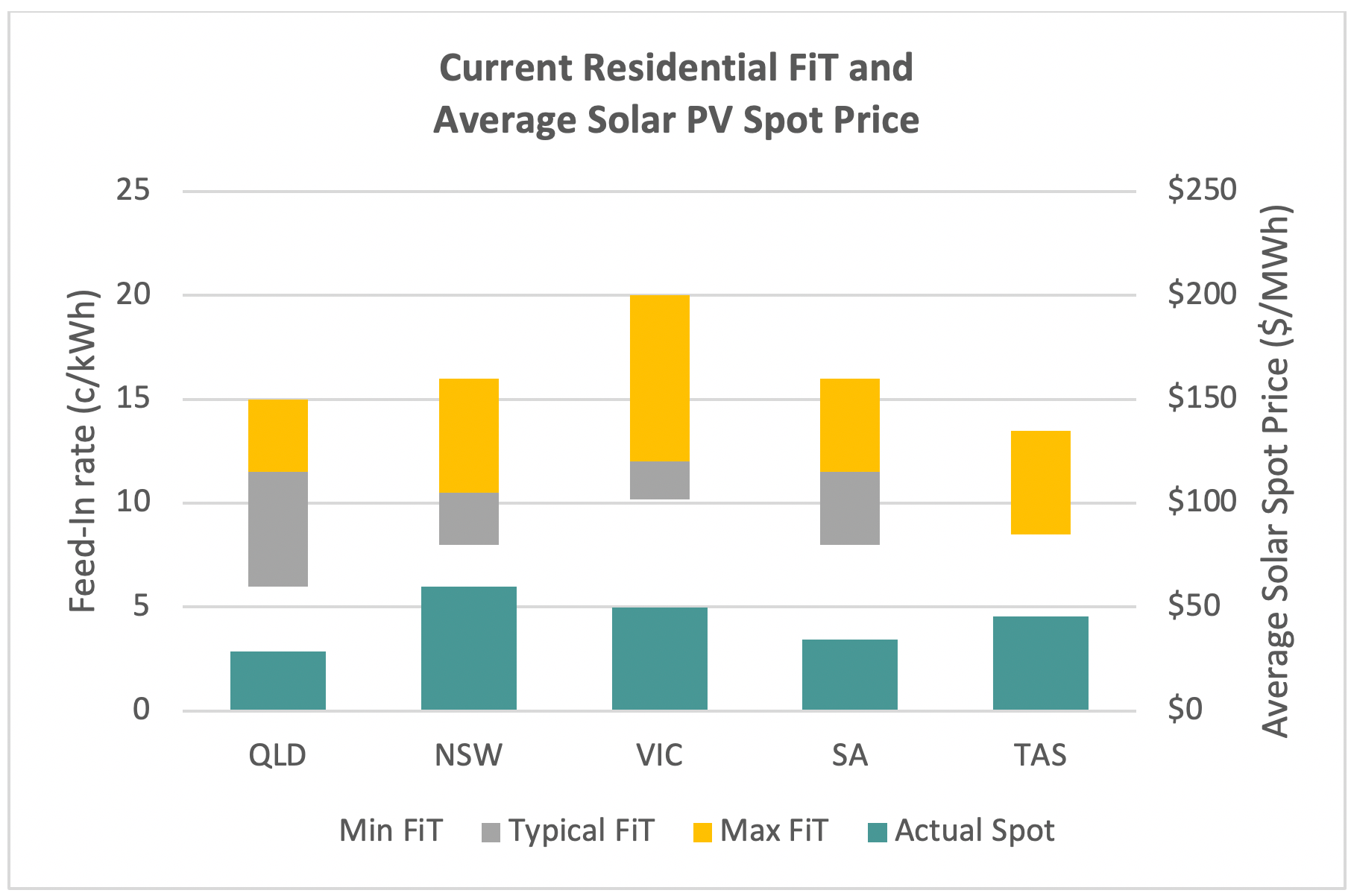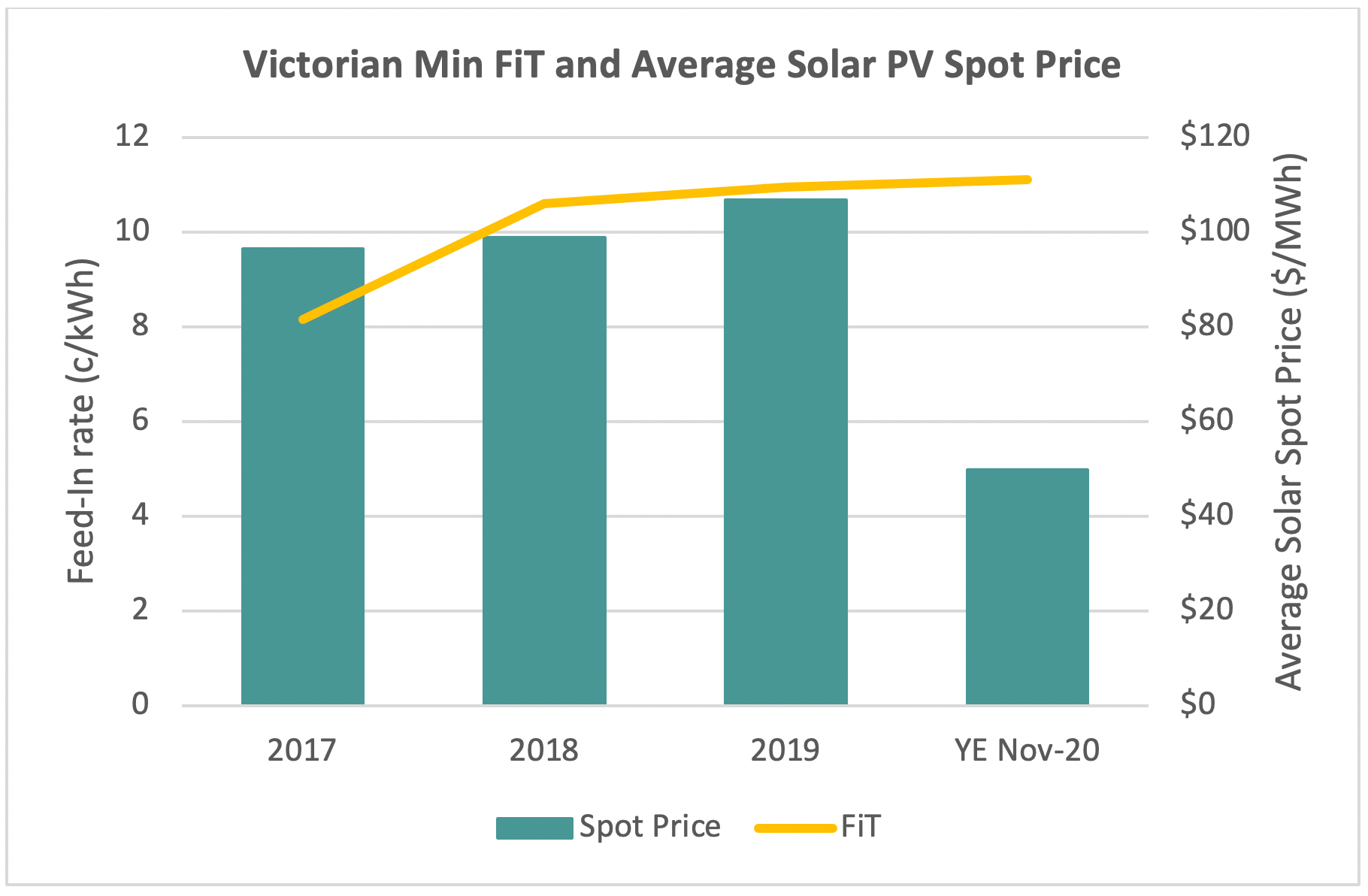The popularity of solar PV systems across Australia continues to grow, but the owners may be facing a longer payback period if they are relying too heavily upon feed-in tariff (FiT) credits. Solar feed-in tariffs are facing a major correction. Let me explain why ...
Average Solar PV Spot Price
When measuring the value of solar PV export against the prevailing spot price, we find the average export solar PV spot price has been declining for all NEM States since 2017 as shown below. Power spot prices have also been falling, but solar PV spot prices is falling faster.

Solar Generation Premium
The average spot price earned by exported solar energy is decreasing as the proportion of solar generation increases. The chart below shows the relationship between the solar PV export average price and the market share of solar generation (small and large scale). In short, as the market share of solar generation increases, the larger the discount applied to the average spot price.
Back in 2017 and 2018, the solar generation earned a premium to the average price because the export energy was being exported at times when prices were higher than the average. However, those days are now behind us, as the solar market share has increased to such a level that when excess solar is now being pushed into the grid, spot prices are usually less than the average.
The yellow canary in the coal mine (i.e. SA and Queensland), are leading the way with the highest proportion of solar penetration. Over the last 12-months (ending 30 Nov-20), the average solar PV price was about 30% less than the average spot price in these two States. The trend lines for these two states are remarkably similar with the same gradient indicating the average export price earned by solar PV is falling rapidly.

NSW and Victoria have a much lower solar penetration, and Tasmania was excluded from this analysis because solar penetration is less than 2%. Victoria’s average solar price premium is marked with the green dots in the chart and is currently about 6.3% of total generation. Victoria has a similar trend line gradient as the leading States of SA and Queensland, so maybe Victoria will follow once the market penetration reaches the levels of the leading States.
For NSW, January 2020 was an exceptional year due to the bushfire-triggered extreme power prices, so if January is excluded, the trend shows the gradient is flatter meaning it is potentially less sensitive to the solar market penetration.
Current Fit Rates Valuation
When the current feed-in tariffs are compared to the average spot price earned by solar PV exports, there is currently a significant premium being paid by the retail market given the inherent value of the solar export. The premium is a running about twice the inherent value, hence the likelihood of a significant correction.
The chart below shows the current range of feed-in tariffs for each State, with the change in colour from the grey to yellow bars marking a typical feed-in tariff. The green bars in the chart represent the average export Solar PV spot price value. The difference is profound.

Please note in the chart that a 10c/kWh retail rate is the same as a $100/MWh rate wholesale rate.
Has FiTs always been over-valued?
Over time, have Solar PV feed-in tariffs always been over-valued? Answer, no - if Victoria is to go by.
Unlike other States, Victoria has a minimum regulated FiT, and so this was therefore easy to compare the minimum feed-in rate with the actual solar PV average price since 2017. The results show during 2017 to 2019, the feed-in tariff could be deemed as fair as the solar PV average spot price was like the feed-in rate. However, it can also be noted the material gap between the year ending Nov-20 and the current feed-in average feed-in tariff for 2020.

Conclusion
Given the solar market share is increasing through the continual growth in residential solar and additional solar farms, the solar PV discount to the average spot price is only going to worsen. Even after taking into account other solar PV benefits such as avoided distribution losses, transmission losses and market fees, plus the social cost of carbon, etc; the material gap between the current feed-in tariff and inherent value, it is hard to see why feed-in rates won’t be heavily corrected.



